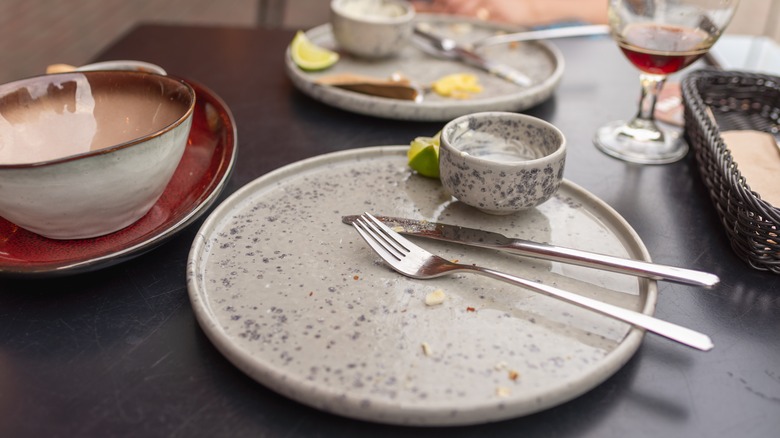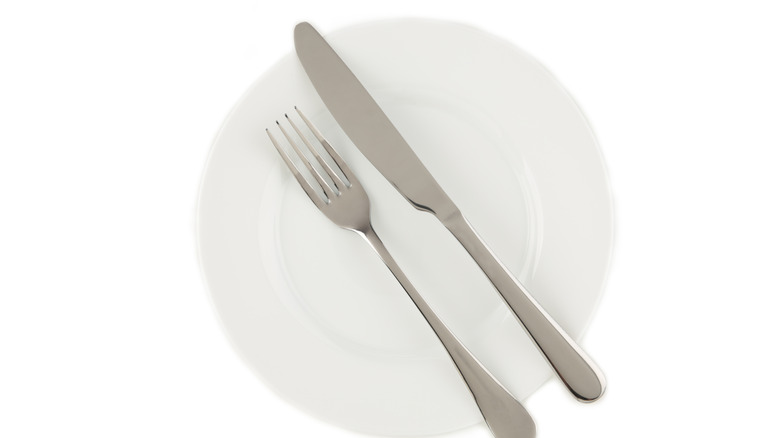The Restaurant Etiquette You Break The Moment You Finish Eating
Codes of dining etiquette and the rules they inspire (aka table manners) have primarily evolved as a means of ensuring respectful conduct towards one's host and fellow diners. However, in situations that involve dining out, there is another group deserving of respect — waitstaff. The etiquette rules governing conduct towards waitstaff are not nearly as well known as those regarding basic table manners, and in fact, many qualify less as codified rules than wishful thinking on the part of servers. In other words, they're table manners that waitstaff wish their customers would observe.
It should be noted, though, that many of these behaviors do fall under the category of proper etiquette. A good example is a common rule that most restaurant guests regularly ignore, to the displeasure of the waitstaff. This commonly broken rule involves pushing away plates at the end of a meal. Many guests may be under the misapprehension that this action makes the job of servers easier, cueing them that the final course has been completed and the table is ready for clearing.
This ignores the fact that there is a proper etiquette cue to signal to restaurant staff that you're done with the meal, one that involves the placement of the fork and knife atop the plate. Waitstaff rarely needs such formal signals. So, all pushing the plate away does is make it harder for them to clear the table.
Why pushing plates away makes clearing tables more difficult for waitstaff
Pushing plates away and, in some cases, stacking them are two things diners often do out of a mistaken idea that they're helping waitstaff. As we've noted, that's not the case. What they're actually doing is making the job of servers or bussers more difficult. Stacking plates, for example, ignores the fact that there is a specific technique for clearing a table. Unless you've worked in the restaurant industry, chances are you don't know how to do this properly.
As for pushing plates away, consider the effect of this action. You're pushing plates farther away from where restaurant staff can easily reach them. Thus, they have to bend over farther to corral the errant tableware.
The intentions may have been good, in that you were trying to be respectful to restaurant staff, but the fact remains (according to no less an authority than Emily Post) that these actions are impolite. However, if you had known the proper rules of etiquette, these mistakes in judgment could have been easily avoided.
How to cue waitstaff that you've finished your meal
What is the proper way to signal that you're finished with your meal? Well, it should be noted that the American and European rules are slightly different. Still, both involve the placement of silverware on the plate. When dining out at restaurants in the U.S., for example, the handles of your utensils (typically, fork and knife — should be placed at about four o'clock using the clock face method, with the business ends (the tines and blade, respectively) pointing towards the top of the plate.
That should be the only signal necessary that the meal is completed. Alternatively, if your server is nearby, you can verbally indicate that you and your fellow diners are finished and ready for plates to be cleared. Each is considered polite and by proper etiquette. By contrast, pushing the plates away is not. In fact, the plate should not be moved at all.
There's no need to feel bad if you've been unknowingly breaking this etiquette rule for years. However, now that you know the proper table manners in this situation, there's no reason to break it again. Dine with confidence!



